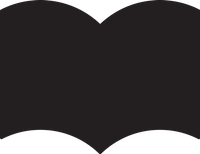Sameti is a book comprised of photographs Line Løkken made in and around a small cottage on Thokampen, a hill-side farm in Sel Municipality, Oppland County, Norway. The title, Sameti, “I thirst,” refers to the cottage — named by its owner, Marcello Haugen, Norway’s most famous psychic medium.
Since it was built in 1915, Sameti has been open to friends and passersby, and has remained open since Haugen’s death in 1967. Løkken’s photographs, made a century after the cottage was built, depict an environment where objects remain meaningful, powerful agents. Løkken explains, “as a child I was told that if you steal or remove something from the cottage you will not find peace before the item is returned — as an adult I wanted to understand this invisible aura, held within the objects and the surroundings of the cottage.”
Marcello Haugen is still considered Norway’s most famous clairvoyant of all time. It is widely accepted that Sameti and the materials Haugen left behind are imbued — in one sense, Løkken’s project explores the question of how. Løkken continues: “The idea that matter remembers interests me. Contemporary research in physics shows that matter has a kind of memory. Does this explain how Marcello Haugen’s objects are loaded with memory of his life and activities?”
Do objects have a life of their own, regardless of how we perceive them? Do they exist only in the moment we recognize them? Or do they have an independent autonomous being?
Margareta Bergman’s being transported And rapt in secret studies is a photo book comprised of original photographs mixed with historical photos and found materials. This compendium was created while surveying the development of a section of the E6, the main north-south thoroughfare in Norway, at the invitation of the Norwegian Public Roads Administration. Bergman’s approach stems in part from a strong distrust of the preconditions for modern road construction — particularly that speed and acceleration should constitute the very premise for all societal development.
Bergman’s photographs were made on trips in Gudbrandsdalen, Norway’s primary land transport corridor, while working alongside inspectors and contractors completing the road construction. Some of the resulting prints use the aura of objectivity surrounding the documentary style, contrasting with those containing collage, paint, and material alterations. The book’s design transforms these materials into a psychic topography, inviting the viewer to become a co-observer of the social- and landscape-changes taking place.
Margareta Bergman’s being transported And rapt in secret studies uses the book medium as a tool for creating new connections, building on her credo: technology that destroys is not fundamentally different from that used for repair. Illustrating this idea against the system of rules, planning, and structures for the road, the book becomes an alternative travel guide for intuitive and free thought.

